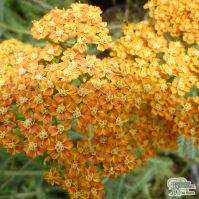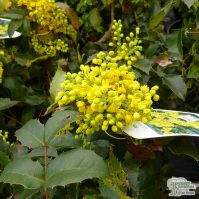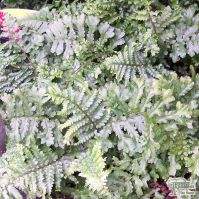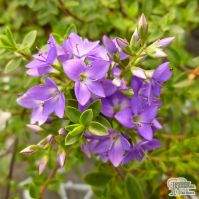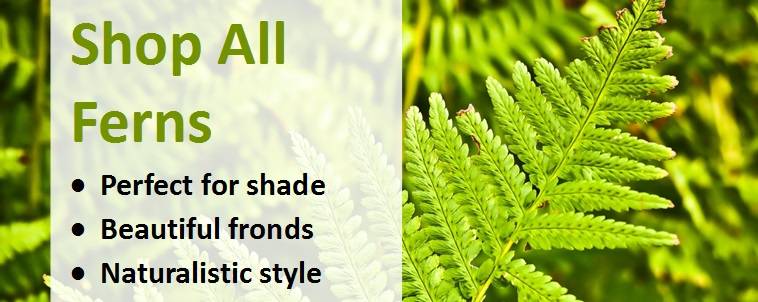Guide to Controlling Weeds in your Garden
Weeds are unwanted plants in your garden that reduce available growing space, nutrients, moisture and sunlight needed by your precious plants, as well as potentially providing cover for diseases. They are difficult to control because they germinate readily almost anywhere, grow rapidly and produce a large number of seeds if not kept in check. This article provides general guidance about how to minimise the number of weeds in your garden and information about how to deal with them when they do appear.
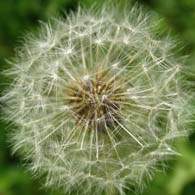 Dandelion |
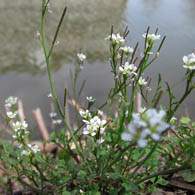 Hairy Bittercress |
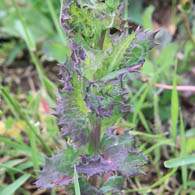 Thistle |
Minimising the Number of Weeds in your Garden
General Tips
Firstly, when designing your garden and before anything has been planted, keep your borders a reasonable size and don't be over-ambitious. When deciding whether to have high maintenance or low-maintenance borders, be honest about how much time you intend to spend in your garden and how much work it will take. Different parts of your garden are likely to take up more time during different seasons so, where possible, plan your borders so you won't have to be doing everything at once.
It's useful to be aware that the soil throughout most gardens is full of weeds seeds, but only those near the surface (the top few inches) will germinate. Digging and cultivating brings hidden weed seeds to the surface, increasing the likelihood of germination. As a general rule, dig only when required, for example, when planting new specimens in your garden, feeding, aerating or improving the texture/composition of the soil. A common misconception is that digging or 'turning' the soil when the above activities are not being undertaken helps to reduce weed growth when, in fact, doing so can have the opposite effect.
Stagger your spring planting wherever possible. As mentioned above, freshly cultivated soil is an invitation for weeds. If you plant all your beds at once, you will be weeding them at the same time also. If you don't like weeding or know you don't have much time to devote to your garden, select plants that will out-compete weeds. Vigorous growing plants, or those which are large, tall, heavy branching or with broad foliage are suitable for this purpose. Remember if your plants fill the space and take available light, moisture and nutrients, there will be none left for weeds to germinate.
Catching weeds early is key because the bigger they get, the harder they are to eradicate. Larger weeds are also more likely to spread further by seeds blowing off in the wind or by underground runners, making them much more difficult to keep in check. We recommend removing weeds on a fortnightly basis during the main growing season over the summer and making sure you have the right tools for the job, in particular a hand fork, garden weed killer and lawn weed killer.
Careful Choice of Irrigation Method
Prevention is better than cure, so consider ways to minimise the scope for weed growth in your garden in the first place. If you can, irrigate only the plants that need it on a selective basis so that the moisture weeds need to germinate is not provided over bare ground or around paths, for example. Using soaking or trickle horses is a useful way of giving out a small amount of water to selective plants over an extended period of time. An alternative approach is to sink a pipe (a used plastic juice bottle with the bottom cut off works just as well) into the ground next to your plants. If you remember to top these up on a regular basis, they provide an effective means of getting water directly to the roots of your plants without providing moisture to other parts of the garden where weeds may grow. In most climates, depriving weeds of water reduces weed-seed germination by 50% to 70%.
Removing Weeds
Removal by Hand
Where time permits, it is best to remove weeds larger than a few inches manually by hand. Wear thick, waterproof gloves and consider investing in a comfortable sitting pad if the work is extensive. It is best to tackle flowering weeds or weeds that are about to flower first to prevent them from spreading their seeds around your garden. Weeds, like all plants, are most vulnerable just before they are about to flower because their energy stores, having been focused on the production of flowers, are depleted; therefore, catching them at this stage means they're less likely to come back.
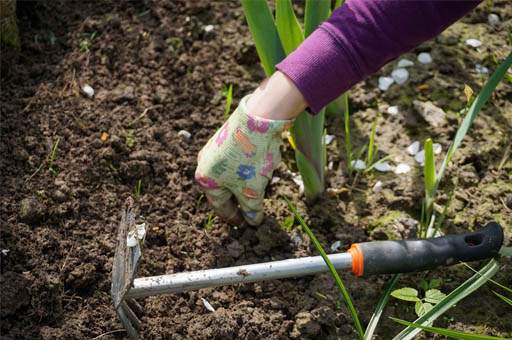
Ideally, weed when the ground is wet, and before the weeds get too large, as this is when they will slide out of the soil most easily. Grasp the weed at the base as close to the soil as possible and pull firmly but smoothly to give yourself the best chance of extracting the fully root system. Ensuring that the whole root system is removed is essential to prevent the weed from growing back again. If you miss the root, use your garden fork to pry the full root system out of the ground. This is most likely to be necessary for weeds such as dandelions and thistles which have long taproots that can go down a foot or more. If you don’t get all of the root, it will simply send up a new weed to replace the one you thought you dug up. Use a trug or tarp to collect the pulled weeds.
Digging Weeds Out
If the weeds persistently grow back, you should dig them out using a garden spade or digging fork, being careful and thorough in removing as many pieces of the weed below the ground as you can. This is most likely to be required for more persistent and problematic types of weeds. If there are seed pods on the weed your dug out, put it in a plastic bag to prevent the seeds from being blown off by the wind or knocked off onto the ground as it is moved. You don't want the seeds settling elsewhere in your garden and creating another problem for you in another few weeks time!
Hoeing
Use short, shallow strokes with a garden hoe to sever weeds from their stems just below the soil surface once a fortnight during the main growing season in the summer. A sharp hoe will cut weeds easily with minimal effort and holding the hoe like you would a broom (with your thumb pointing up) should avoid backache. It's best to do this when the weather is dry because this will mean the roots left behind will shrivel up and die, rather than potentially re-growing. In mulched beds where a hoe may be less effective, a sharp, old knife is useful for detaching weeds from their roots; just remember to patch any open spaces left in the mulch after you've finished.
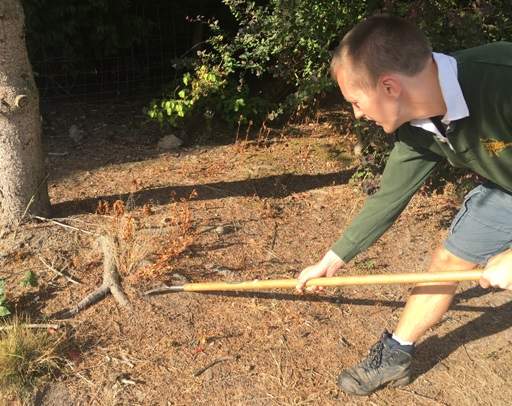
Growing Ground Cover Plants or Planting Closer Together
Using ground cover plants or low growing herbs between your other shrubs and trees is another means of suppressing weeds by crowding them out and eliminating the light they need to grow. In fact, if you have a rich, fertile soil, it's worth considering planting your perennials, shrubs and trees closer together, leaving less bare ground between plants and therefore minimising the amount of space, light and nutrients that weeds have to germinate. Weed-friendly gaps can be avoided by designing with mass plantings of 3-8 of the same shrub in blocks. Planting in 'drifts' of closely spaced plants, rather than adopting a widely-scattered, "polka dot" type approach, helps block out weeds and looks aesthetically pleasing. Consider taking off 25% from plant spacing recommendations, unless the plants you're using are particularly vulnerable to disease if their foliage touches.
Removing Seed-heads
If it is not possible to completely remove weeds, removing their seed-heads provides significant short and long-term benefits in minimising the spread of weeds within your garden. Lopping off the seed heads using a pair of secateurs and then carefully placing them in a plastic bag to prevent seeds from blowing off into your garden will eliminate weed seeds from germinating elsewhere. Also, cutting off the tops of perennial weeds forces them to use up nutrient reserves, thereby limiting their spread. Consider using a folding pruning saw when dealing with larger weeds, prickly thistles or brambles.
Chemical Methods
Herbicides (weed killing chemicals) are another means of weed control that can be used to kill unwanted plants. These work by interfering with the growth of the weed, often synthetically mimicking plant hormones. The weed killers sold by Jacksons Nurseries are easy to apply, biodegradable and kill weeds and roots in 24 hours. Always follow the manufacturers instructions carefully because under-application will result in poor weed control, whilst over-application may result in damage being caused to your plants. For non-selective weed control where you do not have to worry about damaging your plants, consider using Roundup, which is highly effective. Roundup should only be used where you want to kill everything, not just for spot treating weeds in your borders or lawn. One of the benefits of Roundup is you can safely plant within days after spraying - check the manufacturer's label for full details. Always wear appropriate safety equipment when applying any type of chemical fertiliser.
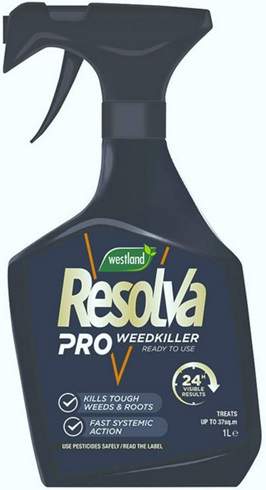
Mulching
Mulching prevents sunlight from reaching the ground, to stop weeds from growing or preventing them in the first place. Essentially, the chlorophyll in all plants (including weeds) requires light for the photosynthesis process, so without access to sunlight the weeds cannot survive. Mulching involves applying a thick layer of bark, rotted leaves or other organic material around the base of your plants, ensuring it does not touch the trunk or stem of the plant itself to minimise the risk of infection and discourage insect invasions. As well as preventing weeds, this has the added benefits of providing a slow-release source of nutrition for your plants; keeping the soil cool in the winter; preventing the ground around the roots from freezing in the winter, thereby reducing frost damage; and improving moisture retention in dry soils. Be especially cautious to ensure that the mulch you use is not already laced with weed seeds (otherwise you could have a nasty surprise a few weeks down the line) and replenish the mulch when required to keep it 2-3 inches deep.
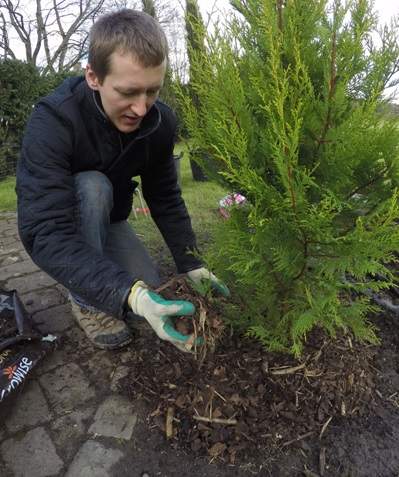
Materials such as newspaper (at least 4 sheets thick but the more the better), kraft paper, cardboard, black plastic, carpet scraps (laid upside down) or purpose-made weed control fabric can also be used under the mulch to further minimise weed growth. Weed control fabric is the most effective, capable of lasting up to 20 years or more when covered with soil. The only slight drawback of this approach (although it is still highly effective) is that as soon as your chosen weed suppressive material is fitted and over-laid with mulch, weed seeds may still be dropped by birds or carried in the wind and land atop the mulch. Some particularly hardy weeds and grasses can germinate with no soil on top of the mulch, then force their roots down through your chosen suppressive material. Therefore, it's still important to keep a watchful eye for new weeds sprouting up. Providing you prevent these weeds from getting too large and reaching the stage where there roots can penetrate your weed suppressant fabric, the solution will continue to be effective.
Weed Disposal
We recommend being cautious in composting weeds to prevent them for spreading further around your garden; if in doubt, always dispose of them in a garbage bag. Providing annual weeds are not in seed, they can go on the compost heap. The same applies for tougher weeds, although it's best to allow them to dry out in the sun first. Always dispose of perennial weeds or any other type of weed that has been a particular problem for you - it's not worth putting it on the compost heap and running the risk it will come back again when the compost is used in your garden later in the season or the following year.
All-in-all, careful design and planning of your garden, coupled with a persistent 'little and often' approach to weeding, will deliver the best results. If all else fails, don't despair; you can always dig out areas of your garden, remove and replenish your soil, and start again.
Share this page:

